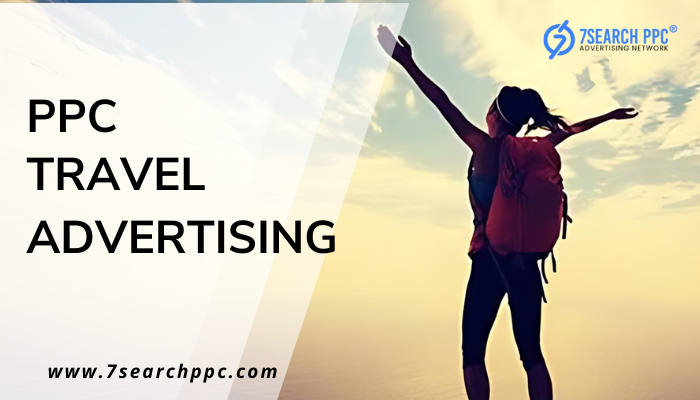In the fast-paced world of travel and tourism marketing strategies have evolved significantly. With the digital landscape reshaping consumer behavior, tourism marketing has become more targeted, personalized, and data-driven.
Whether you’re a small local tour operator, a large hotel chain, or a government body promoting a destination, smart tourism marketing can be the key to driving growth and attracting more visitors. In this article, we’ll explore how to harness the power of strategic marketing in tourism, increase engagement, and ultimately drive higher revenue for your business.
Understanding the Power of Tourism Marketing
What is Tourism Marketing?
Tourism marketing refers to the strategies and activities used by businesses, destinations, and agencies to promote tourism experiences. It involves crafting compelling messages that attract potential travelers, using various channels such as digital advertising, social media, search engines, and content creation.
The goal is to encourage visitors to choose your destination, brand, or service, and ultimately drive economic growth for the region or business.
As more people turn to the internet for travel inspiration and bookings, the tourism marketing industry has had to adapt and evolve. It’s not just about traditional advertisements anymore; it’s about creating an immersive and seamless journey for the potential traveler from the moment they first hear about a destination to when they book their trip.
Why is Smart Tourism Marketing Crucial for Growth?
Smart tourism marketing goes beyond traditional promotional tactics. It focuses on using advanced technologies, data analytics, and a customer-centric approach to promote travel business. The rise of personalized experiences, customer reviews, and data-driven marketing insights has transformed the tourism sector. By using smart strategies, businesses can:
- Increase Brand Visibility: A strong digital presence attracts more travelers through search engines and social media platforms.
- Enhance Customer Engagement: By targeting the right audience with tailored content, businesses can foster lasting relationships.
- Drive Conversions: Smart marketing leads to more bookings and higher ROI by using strategies like email campaigns, personalized ads, and retargeting.
- Optimize Budget Spending: Data-driven decisions help businesses allocate their marketing budgets effectively, maximizing returns.
Proven Strategies for Effective Tourism Marketing
Leverage Social Media to Build Brand Awareness
In today’s digital-first world, social media is one of the most effective tools in tourism marketing. Platforms like Instagram, Facebook, TikTok, and Twitter allow businesses to showcase their destinations and experiences to a broad audience. Smart tourism marketing on social media involves more than just posting beautiful pictures – it’s about telling a compelling story that resonates with potential travelers.
- User-Generated Content (UGC): Encourage satisfied customers to share their travel experiences and tag your brand. UGC helps build trust and credibility among your audience.
- Influencer Partnerships: Collaborate with influencers who align with your brand to amplify your reach and appeal to their followers.
- Live Streams & Stories: Utilize Instagram and Facebook stories, or live streaming to give real-time updates and interact with potential travelers.
Search Engine Optimization (SEO) for Tourism Websites
A tourism website needs to be easy to find when potential travelers are searching for their next vacation destination. Optimizing your website for search engines ensures that you appear in relevant search results, boosting your visibility.
- Keyword Optimization: Use tourism-related keywords, including long-tail variations, to attract targeted visitors. This could include “best destinations for families” or “affordable beach resorts.”
- Local SEO: Optimize your website for local search queries if you are promoting a specific destination. This involves using local keywords and registering your business on Google My Business.
- Mobile Optimization: Many travelers search for information and make bookings via mobile devices, so having a mobile-friendly site is crucial for a good user experience and SEO performance.
Create Engaging and Informative Content
Content marketing is essential for building relationships with potential customers. High-quality content that educates, informs, or entertains helps attract visitors, establish your authority, and build trust. In tourism marketing, content is not just about writing blogs or articles – it’s about creating valuable experiences for your audience.
- Destination Guides: Create comprehensive guides that provide useful information about the destinations you promote. Include top attractions, restaurants, activities, and tips for first-time visitors.
- Video Content: Videos allow you to visually showcase the experiences travelers can expect. Whether it’s a drone tour of a destination or a behind-the-scenes look at your accommodations, videos are highly engaging and shareable.
- Travel Blogs & Testimonials: Share stories and testimonials from past visitors, including insights into their experiences, tips, and personal stories. Authentic content like this can persuade potential travelers to book.
Personalization: A Game-Changer in Tourism Marketing
Data-Driven Personalization
In an age where consumers expect tailored experiences, personalization in tourism marketing is more important than ever. Using customer data to deliver personalized recommendations can enhance the customer experience and boost conversions.
- Targeted Email Campaigns: Based on user behavior, send personalized offers and promotions to potential customers. For instance, if a user searched for beach destinations, send them an email with special offers for beach resorts.
- Behavioral Retargeting: Retarget users who have visited your website but haven’t completed a booking. Personalized ads can remind them of what they’re missing and encourage them to take action.
Utilize AI and Chatbots for Better Customer Service
The integration of AI and chatbots into tourism marketing strategies has revolutionized customer service. These tools can engage potential customers in real-time, offering information, answering questions, and even assisting with bookings.
- 24/7 Availability: Chatbots allow for instant responses at any time of day, providing assistance to travelers no matter where they are in the world.
- AI-Based Recommendations: AI can analyze past visitor behavior to suggest customized experiences and packages, increasing the likelihood of conversion.
Implementing Influencer Marketing in Tourism
Influencer marketing has become a key strategy in tourism marketing. By partnering with influencers who have a strong and engaged following, you can extend your reach and build credibility with potential travelers.
Finding the Right Influencers
Not all influencers will be a good fit for your brand. It’s essential to partner with influencers whose audience aligns with your target demographic. Whether they are travel bloggers, vloggers, or social media personalities, influencers can help promote your brand in an authentic and relatable way.
- Micro-Influencers: Partnering with micro-influencers (those with smaller, niche audiences) can be more cost-effective and often leads to higher engagement rates.
- Authenticity Over Numbers: Instead of focusing solely on follower count, look for influencers who have a genuine connection with their audience.
Measure and Optimize Your Marketing Efforts
Analyzing Data to Improve Tourism Marketing
To ensure that your tourism marketing strategies are effective, you need to continuously monitor and analyze your efforts. Using analytics tools can help you track the success of your campaigns, identify areas of improvement, and make data-driven decisions.
- Google Analytics: Track website traffic, user behavior, and conversion rates to measure the effectiveness of your SEO and content marketing strategies.
- Social Media Analytics: Use insights from platforms like Instagram and Facebook to evaluate engagement levels, demographics, and post performance.
- A/B Testing: Test different ad creatives, email subject lines, and landing page designs to determine what resonates best with your audience.
Adjusting Campaigns for Better Results
Tourism marketing is not a one-size-fits-all approach. Different markets may respond better to certain strategies. By regularly analyzing your data and adjusting your campaigns accordingly, you can continually refine your approach to maximize growth.
Conclusion
In conclusion, tourism marketing is crucial for attracting visitors and ensuring long-term business growth. By leveraging modern tools, data analytics, and personalization strategies, businesses in the tourism sector can stand out in a crowded market.
Social media, SEO, influencer marketing, and innovative technologies such as AI are all powerful components of a successful tourism marketing strategy. By continually optimizing your efforts, you can ensure that your tourism brand thrives in today’s competitive landscape.
Frequently Asked Questions(FAQs)
What is the role of social media in tourism marketing?
Ans: Social media plays a pivotal role in tourism marketing by enhancing brand visibility, enabling real-time engagement, and fostering trust through user-generated content and influencer partnerships.
How can I use SEO for tourism marketing?
Ans: SEO can help your tourism business rank higher in search engines, making it easier for potential travelers to find your destination or services. This involves optimizing your website, using relevant keywords, and focusing on local SEO.
Why is personalized marketing important in tourism?
Ans: Personalized marketing helps to engage potential customers by offering tailored recommendations and experiences, increasing the likelihood of conversion and fostering customer loyalty.
How do I measure the success of my tourism marketing campaigns?
Ans: By using tools like Google Analytics and social media insights, you can track metrics such as website traffic, engagement, and conversion rates, enabling you to refine your marketing strategies over time.


